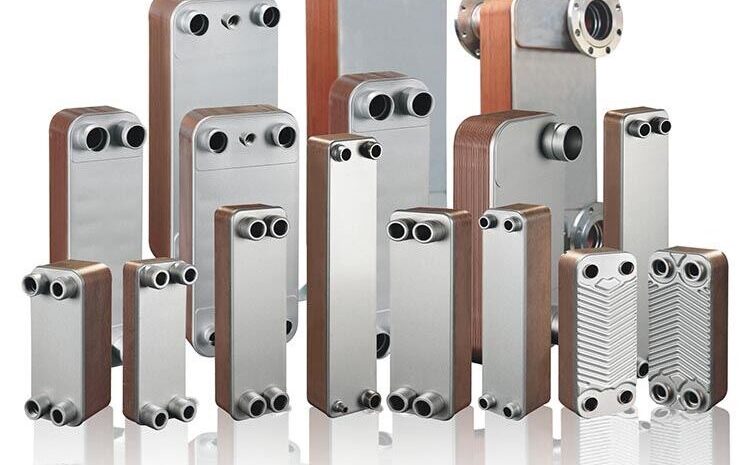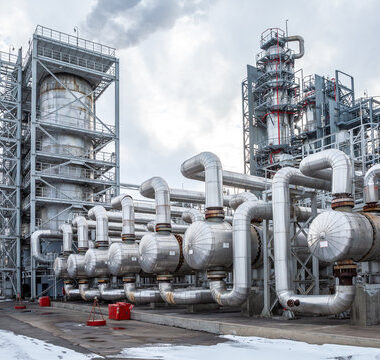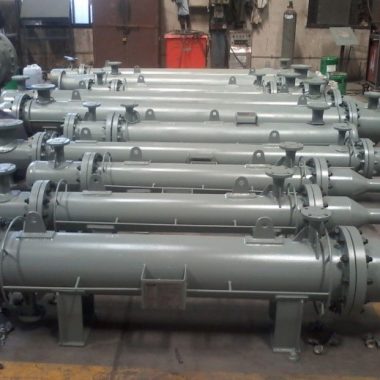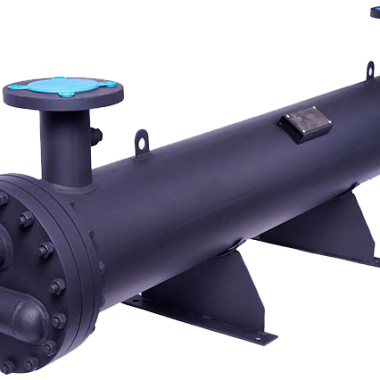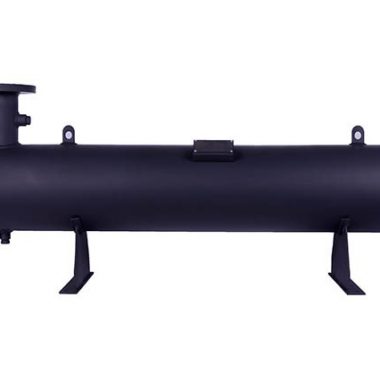Brazed Plate Heat Exchangers
Introduction
Brazed Plate Heat Exchangers (BPHEs) have emerged as a highly efficient solution for situations where space is at a premium but thermal performance cannot be compromised. Unlike traditional heat exchangers, BPHEs use a compact, stacked-plate design that allows them to transfer heat efficiently while occupying significantly less space. Their ability to deliver powerful heat exchange in confined environments makes them indispensable in a variety of applications, such as HVAC systems, chillers, energy recovery, and industrial cooling processes.
Key Features
- Compact Size:
BPHEs are significantly smaller than traditional heat exchangers, such as shell-and-tube models. Their design allows for more plates to be stacked in a smaller area, making them ideal for installations with limited space. The reduced size doesn’t compromise performance, allowing BPHEs to deliver the same or even better heat transfer in a fraction of the space. This feature is especially useful in modern facilities where floor space is a premium resource. - High Heat Transfer Efficiency:
The efficiency of a BPHE comes from its intricate plate design. The plates are corrugated or patterned to create turbulent flow as fluids pass between them. This turbulence improves heat transfer by increasing surface contact between the fluids and the metal plates, making the heat exchange process faster and more effective. The efficiency also means that smaller units can perform the same function as larger traditional units, which reduces the system’s energy consumption. - Durability:
BPHEs are brazed together using metals like copper or nickel, which create a sealed, leak-proof structure. The brazing process ensures that the plates are tightly bonded, reducing the risk of leaks or failures even under high pressure and temperature conditions. Copper-brazed units are commonly used for standard applications, while nickel-brazed models are chosen for aggressive fluids, like ammonia or certain chemicals, due to their enhanced corrosion resistance. - Low Maintenance:
Compared to other types of heat exchangers, BPHEs have a simpler structure with fewer moving parts, which reduces the need for maintenance. The brazed construction eliminates gaskets and bolted connections, common points of failure in other heat exchangers. This leads to less downtime for repairs and lower overall operating costs. The self-cleaning effect of the turbulence created by the plate design also helps reduce fouling, keeping the system running efficiently for longer periods. - Cost-Effective:
Due to their smaller size and higher efficiency, BPHEs often require less material to build and less energy to operate. Their compact nature reduces installation costs because they can be integrated into smaller, more confined spaces without the need for extensive structural modifications. Moreover, their efficiency reduces the energy required to achieve the desired heating or cooling, resulting in lower energy bills over time. This makes BPHEs a cost-effective option both in terms of initial investment and ongoing operational costs.
Applications of Brazed Plate Heat Exchangers
- HVAC Systems:
In heating, ventilation, and air conditioning (HVAC) systems, space is often limited, and energy efficiency is a top priority. BPHEs are used in chillers, heat pumps, and air conditioning systems to efficiently transfer heat between fluids in a compact, easy-to-install unit. Their small size allows HVAC manufacturers to design smaller systems that perform just as well, if not better, than larger alternatives. - Chillers and Heat Pumps:
BPHEs are integral components in modern chillers and heat pumps, where space and performance are critical. In chillers, they help efficiently transfer heat from the refrigerant to a cooling medium like water. In heat pumps, BPHEs can function as both evaporators and condensers, depending on the system’s operating mode. Their compact nature makes them especially useful in portable or modular chiller systems that need to be easily moved or reconfigured. - Industrial Cooling:
Many industrial processes require precise temperature control, but space within facilities is often limited. BPHEs are commonly used in industries like pharmaceuticals, electronics, and chemical processing, where they provide efficient heat transfer in a compact form factor. In these settings, BPHEs contribute to faster cooling, reduced energy use, and more consistent process control, all within a limited space. - Energy Recovery:
BPHEs are used in energy recovery applications, such as in waste heat recovery or renewable energy systems like solar thermal installations. In these systems, they transfer heat from one fluid to another, recovering energy that would otherwise be lost. The compact design of BPHEs allows them to be installed in systems where space is limited, such as in residential buildings or small commercial settings. This ability to recover and reuse energy makes them valuable in efforts to reduce overall energy consumption.
Advantages of Brazed Plate Heat Exchangers
- Reduced Footprint:
BPHEs take up significantly less space than traditional heat exchangers, often up to 80% less. This reduced footprint is crucial for facilities with limited room for equipment. The compact size of BPHEs allows for easier installation and more flexibility when configuring systems, especially in retrofit projects where space is constrained. - Flexible Installation:
One of the standout features of BPHEs is their installation flexibility. They can be mounted in various orientations—vertically, horizontally, or at an angle—without affecting performance. This versatility makes it easier to fit them into tight spaces or integrate them into existing systems without major modifications. - Energy Efficiency:
BPHEs are designed to provide maximum heat transfer with minimal energy input. Their efficient design reduces the need for additional pumping power and helps optimize the overall energy usage of a system. By improving heat transfer efficiency, BPHEs can contribute to significant energy savings, which is especially valuable in applications where energy consumption is a major operational cost.


